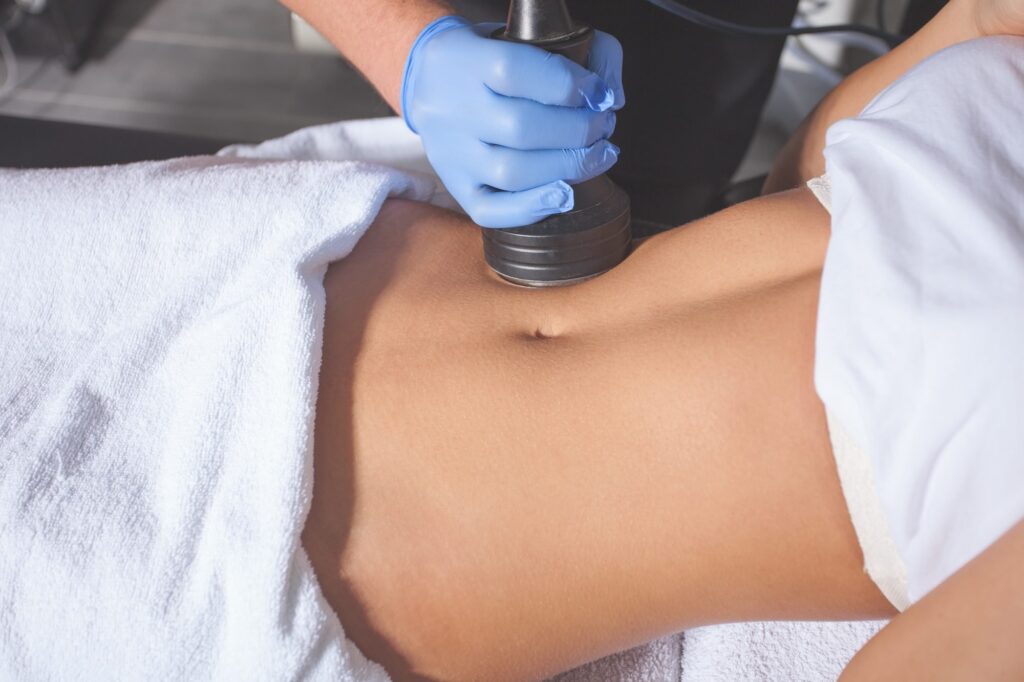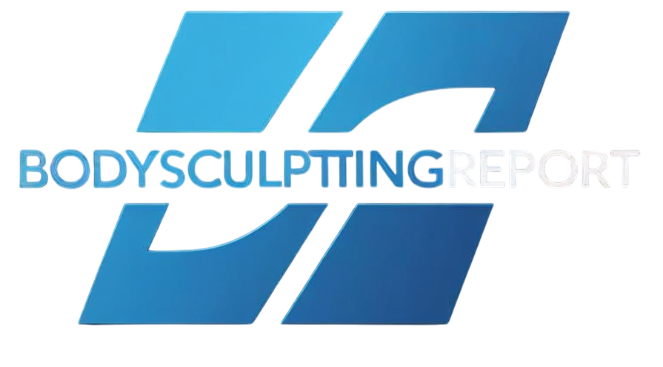Body Sculpting Recovery & Aftercare: Your Essential Guide to Healing and Results
The decision to undergo body sculpting is a significant step towards achieving your aesthetic goals. While the excitement of seeing your new silhouette is palpable, understanding the recovery process is just as crucial as choosing the right procedure. At BodySculpting Report, we believe that a well-informed recovery is key to optimal results and a comfortable experience. This body sculpting recovery aftercare guide will walk you through what to expect, how to manage discomfort, and essential tips for a smooth healing journey.

Quick Navigation
- Understanding Your Body Sculpting Recovery Timeline
- Managing Discomfort and Swelling in Your Body Sculpting Recovery
- The Importance of Compression Garments
- Scar Care and Skin Health
- Activity, Nutrition, and Hydration During Recovery
- Recognizing Potential Complications in Body Sculpting Aftercare
- Ensuring Long-Term Body Sculpting Results
Understanding Your Body Sculpting Recovery Timeline
Every body sculpting procedure has its unique recovery nuances, whether it’s a surgical intervention like liposuction or a non-invasive treatment like CoolSculpting. However, there are general phases to consider when planning your body sculpting recovery aftercare.
Immediate Post-Procedure (Days 1-7)
- Surgical Procedures (e.g., Liposuction, Tummy Tuck): Expect initial swelling, bruising, and discomfort. Drains might be in place. Rest is paramount, and light walking is encouraged to promote circulation. Pain medication will be prescribed.
- Non-Surgical Treatments (e.g., CoolSculpting, Emsculpt NEO): Minimal to no downtime. You might experience temporary redness, swelling, bruising, tingling, or tenderness in the treated area. Most can resume normal activities immediately.
Short-Term Recovery (Weeks 1-4)
- Surgical Procedures: Swelling and bruising will gradually subside. You’ll likely transition from prescription pain medication to over-the-counter options. Compression garments remain essential. Light activities can be increased, but strenuous exercise is still off-limits.
- Non-Surgical Treatments: Any residual discomfort or swelling should resolve. Initial results might start to become visible as your body processes treated cells.
Mid-Term Recovery (Months 1-3)
- Surgical Procedures: Most significant swelling should be gone, revealing more refined contours. Scars will begin to mature and flatten. You can typically resume most normal activities and light exercise, as advised by your surgeon.
- Non-Surgical Treatments: Optimal results typically appear around the 3-month mark as your body fully eliminates fat cells or builds muscle.
Long-Term Recovery & Maintenance (3+ Months)
- All Procedures: Final results will be evident. Continued healthy lifestyle habits (diet and exercise) are crucial for maintaining your sculpted physique. Scars will continue to fade and flatten over 12-18 months.
Managing Discomfort & Swelling in Your Body Sculpting Recovery
Discomfort and swelling are natural parts of the body sculpting recovery aftercare process, regardless of the procedure type. Effective management is crucial for a more comfortable healing experience.
Pain Management Strategies
- Prescription Medication: For surgical procedures, your doctor will prescribe pain medication for the initial days. Take as directed to control discomfort.
- Over-the-Counter Pain Relievers: Once off prescription medication, ibuprofen or acetaminophen can manage milder pain. Always follow dosage instructions.
- Cold Compresses: Applying cold packs to the treated area (never directly on skin, use a barrier) can help reduce swelling and numb the area.
- Rest: Allow your body adequate rest. Pushing yourself too soon can increase pain and prolong recovery.
Reducing Swelling
- Compression Garments: Absolutely essential for surgical recovery (more on this below). They help reduce fluid retention and minimize swelling.
- Support New Contours: They help the skin adhere to the new underlying contours, promoting a smoother result.
- Improve Comfort: They provide gentle support to the treated areas, which can reduce pain and discomfort.
- Aid in Healing: By reducing swelling and supporting tissues, they help the body heal more efficiently.
The Importance of Compression Garments
Compression garments are a cornerstone of effective body sculpting recovery aftercare, particularly after surgical procedures like liposuction, tummy tucks, or body lifts. Your surgeon will provide specific instructions regarding their use.
Why Are They Crucial?
- Reduce Swelling: They apply even pressure, preventing fluid accumulation and minimizing swelling.
- Support New Contours: They help the skin adhere to the new underlying contours, promoting a smoother result.
- Improve Comfort: They provide gentle support to the treated areas, which can reduce pain and discomfort.
- Aid in Healing: By reducing swelling and supporting tissues, they help the body heal more efficiently.
Tips for Wearing Compression Garments
- Wear as Directed: Follow your surgeon’s instructions precisely regarding how long to wear them (usually 4-6 weeks, sometimes longer).
- Proper Fit: Ensure the garment fits snugly but isn’t too tight to cause skin irritation or impede circulation.
- Hygiene: Have at least two garments so you can wash one while wearing the other.
- Troubleshooting: If you experience excessive discomfort, skin irritation, or numbness, contact your surgeon’s office.
Scar Care and Skin Health
Managing scars is an important part of body sculpting recovery aftercare for surgical patients. While non-surgical procedures typically leave no scars, surgical interventions involve incisions that require careful attention for optimal healing.
Phases of Scar Healing
- Inflammatory Phase (0-5 days): Redness, swelling, pain as the body begins to heal.
- Proliferative Phase (5 days – 3 weeks): New tissue forms, scar might appear raised and red.
- Remodeling Phase (3 weeks – 1 year+): Scar tissue remodels, becoming flatter, softer, and lighter.
Essential Scar Care Tips
- Keep Incisions Clean and Dry: Follow your surgeon’s instructions for wound care rigorously.
- Avoid Sun Exposure: UV rays can cause scars to darken and become more noticeable. Use high-SPF sunscreen or keep scars covered.
- Silicone Products: Silicone sheets or gels are widely recommended to improve scar appearance. Start using them once incisions are fully closed and healed.
- Massage: Once approved by your surgeon, gentle massage can help flatten and soften scars.
- Hydration: Keep the skin around the scar well-hydrated.
For more detailed information on scar management techniques, consult resources like the American Academy of Dermatology.
Activity, Nutrition, and Hydration During Recovery
Your lifestyle choices play a significant role in your body sculpting recovery aftercare and the longevity of your results. What you eat and how you move can greatly impact healing.
Gradual Return to Activity
- Light Walking: Essential from day one (for surgical patients) to prevent blood clots and improve circulation.
- Avoid Strenuous Exercise: No heavy lifting, intense cardio, or core exercises until cleared by your surgeon (typically 4-6 weeks for most surgical procedures, sooner for non-surgical).
- Listen to Your Body: Pain is a signal. Don’t push through it.
Optimizing Nutrition for Healing
- Protein Rich Diet: Essential for tissue repair and collagen production. Include lean meats, fish, eggs, legumes, and protein shakes.
- Vitamins and Minerals:
- Vitamin C: Crucial for collagen synthesis (citrus fruits, bell peppers).
- Vitamin A: Supports cell growth (carrots, sweet potatoes).
- Zinc: Boosts immune function and wound healing (nuts, seeds, lean meats).
- Anti-Inflammatory Foods: Reduce swelling and discomfort (berries, leafy greens, fatty fish, turmeric).
- Fiber: Prevent constipation, which can be an issue with pain medication.
Stay Hydrated
- Water is Key: Drink plenty of water throughout the day to help reduce swelling, flush toxins, and maintain overall health. Aim for at least 8-10 glasses (2-2.5 liters) daily.
- Avoid Dehydrating Beverages: Limit caffeine and alcohol, as they can hinder the healing process.
Recognizing Potential Complications in Body Sculpting Aftercare
While serious complications are rare, being aware of potential issues is part of responsible body sculpting recovery aftercare. Knowing what to look for allows you to act quickly if something seems amiss.
When to Contact Your Doctor Immediately
- Fever: Any temperature above 101°F (38.3°C) could indicate infection.
- Excessive Pain: Pain that worsens instead of improves, or isn’t managed by prescribed medication.
- Redness or Warmth: Spreading redness, increased warmth, or pus around the incision sites.
- Excessive Swelling or Bruising: Unilateral swelling (one side much more swollen than the other) or sudden, severe bruising.
- Numbness or Tingling: Persistent or new numbness/tingling that wasn’t present immediately after the procedure.
- Bleeding: Any significant or continuous bleeding from the incision sites.
- Shortness of Breath or Chest Pain: These are emergency symptoms and require immediate medical attention.
Always follow your surgeon’s specific post-operative instructions and know their emergency contact protocols.
Ensuring Long-Term Body Sculpting Results
The success of your body sculpting procedure extends far beyond the initial recovery. Long-term body sculpting recovery aftercare involves maintaining a healthy lifestyle to preserve and enhance your new contours.
Lifestyle for Longevity
- Stable Weight: Significant weight fluctuations can compromise your results. Aim for a stable, healthy weight.
- Balanced Diet: Continue to prioritize whole, unprocessed foods.
- Regular Exercise: Incorporate both cardiovascular and strength training to maintain muscle tone and overall fitness.
- Skin Care: Continue to hydrate your skin and protect it from sun exposure.
- Follow-Up Appointments: Attend all scheduled follow-up visits with your surgeon to monitor your progress.
Your journey with body sculpting is an investment in yourself. By diligently following proper body sculpting recovery aftercare, you empower your body to heal effectively and ensure that your stunning results last for years to come.
About This Guide
This comprehensive guide to body sculpting recovery & aftercare was compiled by the editorial team at BodySculpting Report, with input from board-certified plastic surgeons and post-operative care specialists. Last updated: July 2025.
